The next morning greeted me with rain. And not just any rain – it was bucketing.
The greyness of low clouds and rain obscured any pleasant views, especially of the famous beach in Hua Hin.
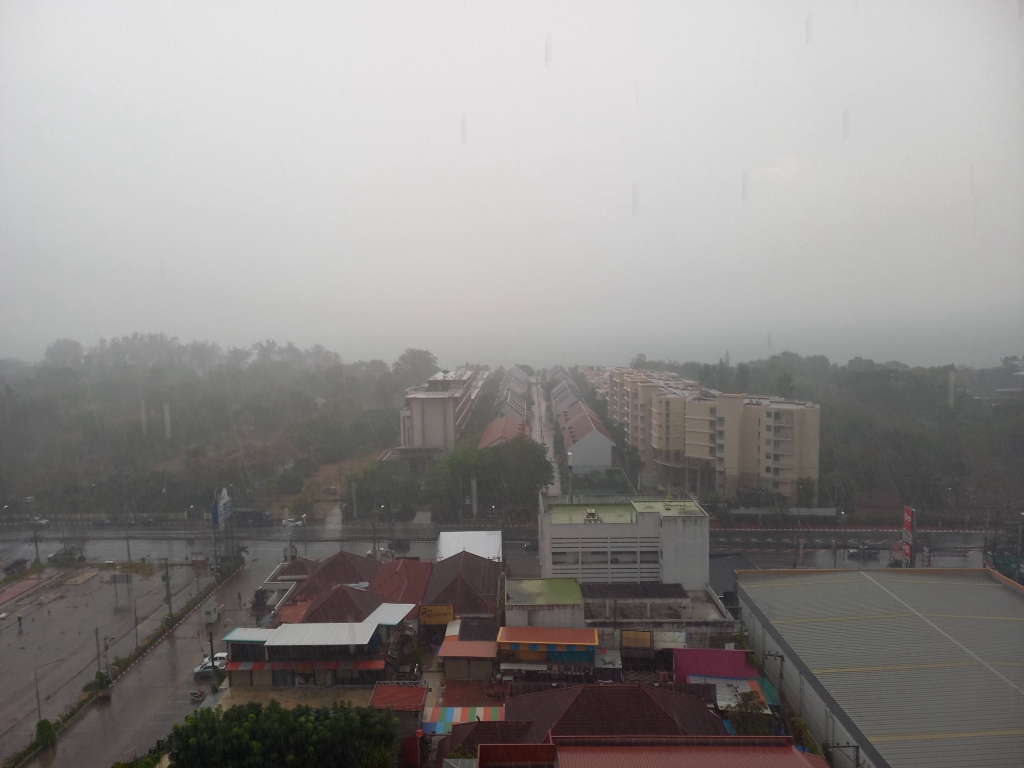 Rainy morning in Hua Hin
Rainy morning in Hua Hin
However, I didn’t come here to go to the beach, so the weather in the town didn’t bother me much. I intended to go on a trip to a national park, hoping to find some tourist offers or an ad hoc group. Unfortunately, that wasn’t the case, so the only option was to arrange with the hotel receptionists to get a taxi to take me to the entrance of the national park later on.
Since I had some time free and the rain had momentarily stopped, I took advantage of it and walked back to the beach. Now I knew exactly where to go, using the narrow passage between the plots belonging to hotels, resorts and similar establishments, all interconnected, preventing individual visitors who weren’t their guests from reaching the beach from the main street.
I wasn’t the only one taking advantage of the break in the rain to walk on the soft sand. I even sat in a beachside restaurant and enjoyed a refreshing drink there.
 Beach in Hua Hin
Beach in Hua Hin
However, I didn’t stay there for too long, considering that I had to go on that “excursion” by taxi later and I also wanted to rest a bit more before that and eat something that would energise me. As mentioned in the previous sequel, I had been experiencing cold symptoms since the previous day, which weren’t worsening, but were still very much present.
In such situations, I usually find comfort in having some warm soup, not necessarily chicken soup. I managed to find something similar here and it really hit the spot. It was a hot soup with wonton dumplings and roast duck. The place seemed quite ordinary, but the soup was extraordinary and truly revitalised me.
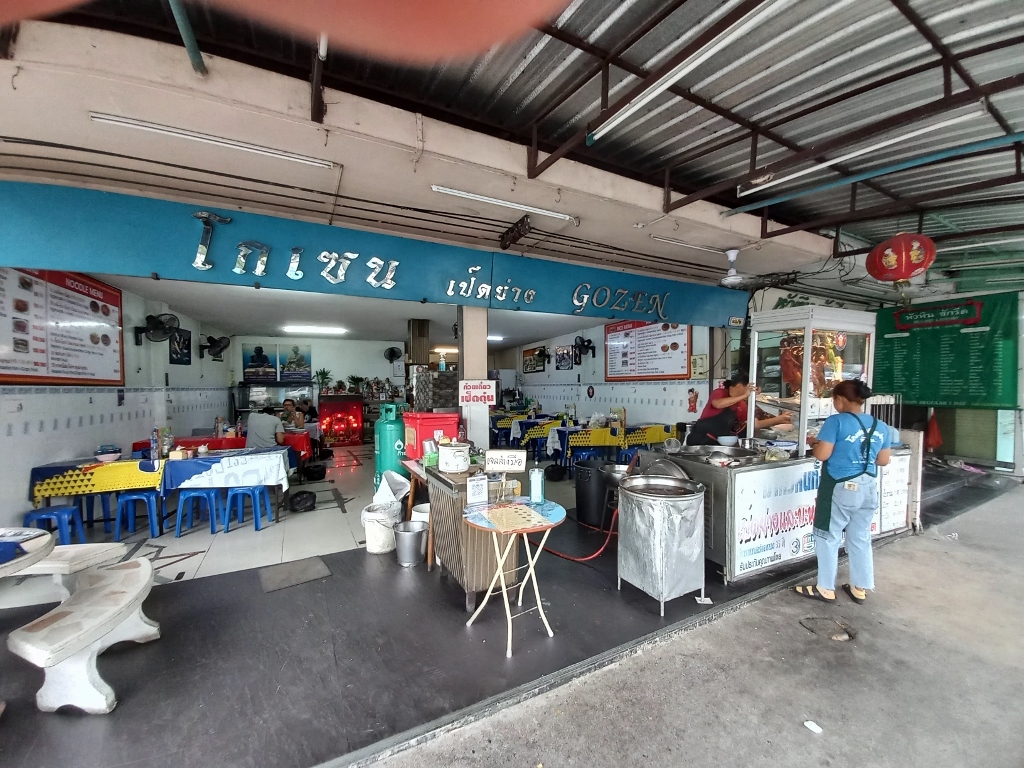 Restaurant in Hua Hin
Restaurant in Hua Hin
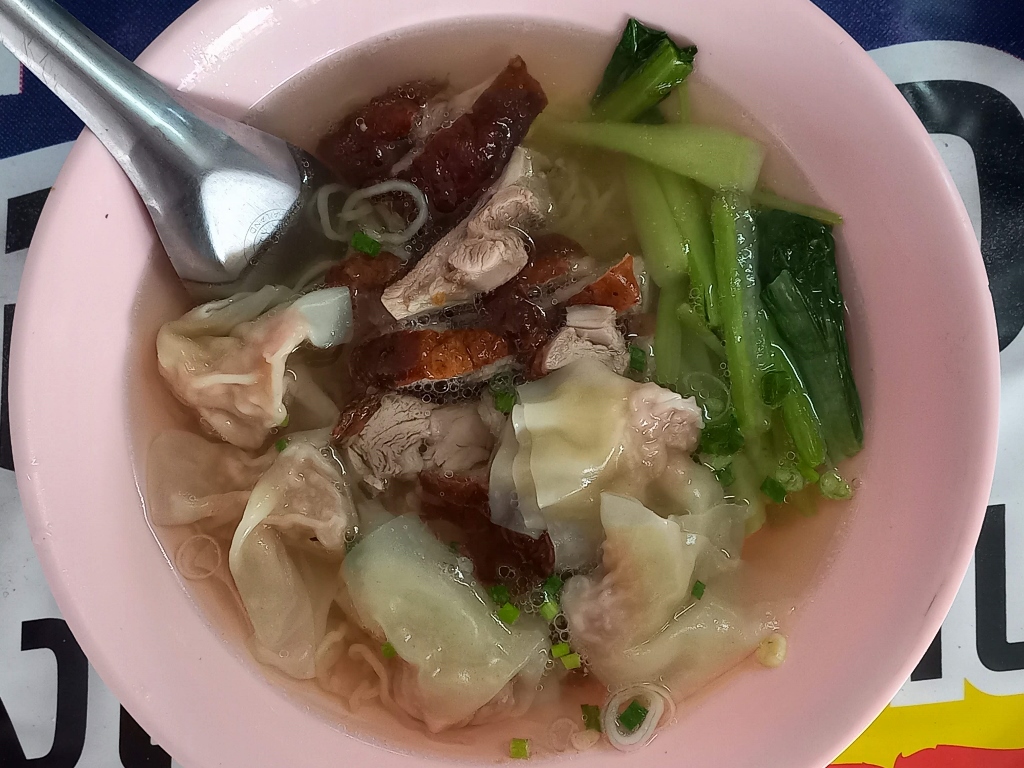 Wonton and roast duck clear soup
Wonton and roast duck clear soup
While I was finishing my meal there, it started to rain again. Not too heavily and I wasn’t far from the hotel, but I still had to make an effort to avoid getting completely soaked.
 Rain in Hua Hin
Rain in Hua Hin
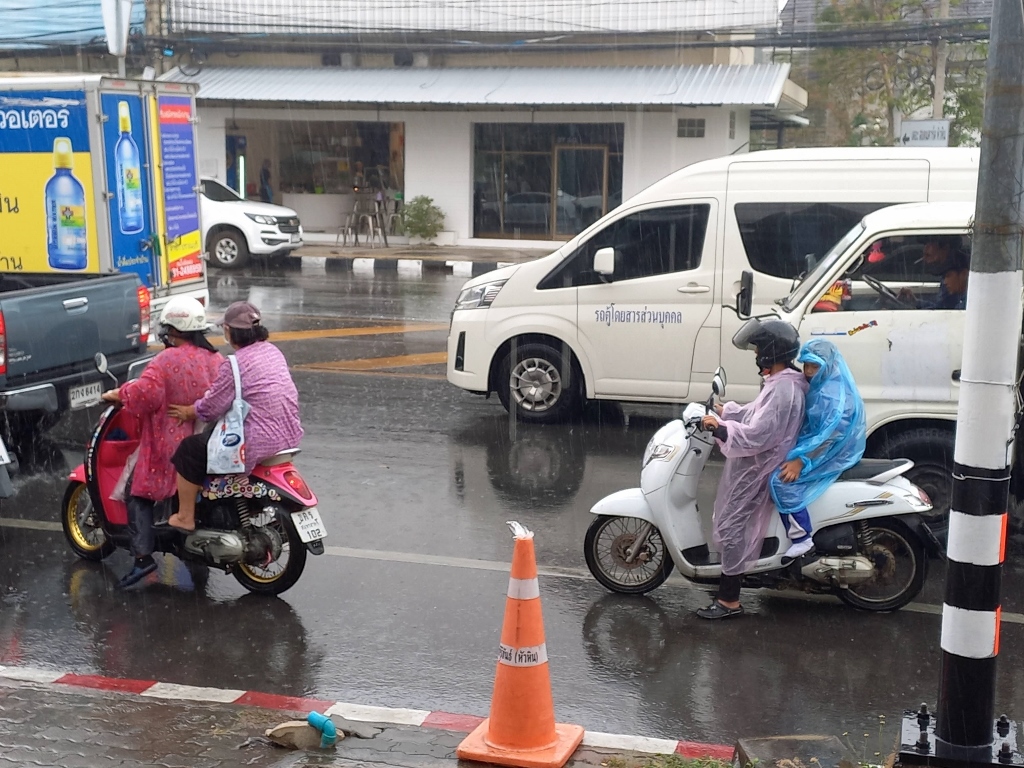 Rain in Hua Hin
Rain in Hua Hin
I wasn’t in any rush anywhere here since the excursion I wanted to go to was scheduled for the afternoon. I wanted to visit the Kui Buri National Park in order to potentially observe elephants in their natural environment. The wildlife viewing area is open to visitors from 2 to 6 in the afternoon, so there was no need for me to leave early in the morning. The park or rather the starting point for the excursion is about 85 km away from Hua Hin.
The Kui Buri National Park, covering an area of 969 sq. km, is a part of the Kaeng Krachan Forest Complex, which is included in the UNESCO’s World (natural) Heritage List. The reason for this recognition lies in its rich biodiversity. In addition to various types of forests in this part of Thailand, the park is home to numerous endemic and endangered plant and animal species.
However, my desire to see Asian elephants in their natural environment led me to choose this location after visiting the Khao Yai National Park, where my initial plan to see them in the wild didn’t materialise. I’ve written about that experience earlier (https://www.svudapodji.com/en/thailand-14/).
In Thailand, Asian elephants can be seen in numerous reserves and places where they are kept for rehabilitation and similar purposes, allowing tourists to get a close look. However, such places don’t interest me because they are essentially specialised zoos. What I wanted to witness were elephants in their natural habitat, where I could observe them from a distance. I no longer feel any need to pet or feed a wild animal, not because I don’t love them, but out of respect. Moreover, I absolutely love photographing them, but not necessarily posing with them or riding them.
The Kui Buri National Park is reputed to be the best place to observe elephants, claiming that they are visible “in 99% of cases.” That’s why I decided to take a taxi and travel 85 km south of Hua Hin.
The taxi driver picked me up at the agreed-upon time and we set off just as the rain began to pour. The sky had opened up. However, by the time we reached the Visitor Centre within the national park, the rain had mostly stopped.
When I went to purchase a ticket, I encountered a somewhat unpleasant surprise. The tour is conducted using converted pickup trucks, where the cabin is smaller and accommodates the driver and the guide, while passengers sit in the cargo area on benches. As I was alone, they told me I had to pay the full price for the entire truck!
Since I was already there, I felt like I didn’t have much choice, but I still tried to negotiate. The woman selling tickets advised me to go to the park entrance (about a hundred metres away) and see if any visitors would allow me to join them. So, that’s what I did and I found a Dutch family who kindly allowed me to join them.
I hurried back to the ticket office and then rushed back to avoid keeping them waiting. The family was exceptionally quiet, but I was truly grateful and I tried to disturb them as little as possible.
All in all, we soon set off, driving on some of the dirt roads within the park.
 Kui Buri NP
Kui Buri NP
At one point, we caught up with a couple of trucks similar to the one we were in. This happened because a tree had fallen across the road in the meantime. We had to wait a bit until the tree was removed and then we could continue to move on.
 Kui Buri NP
Kui Buri NP
In some places, it was quite evident that a large amount of rain had fallen, but occasionally, the sun started to break through the clouds.
 Kui Buri NP
Kui Buri NP
 Kui Buri NP
Kui Buri NP
The guide accompanying our vehicle had no intention of engaging in anything other than taking us to the viewpoints, as it turned out, where elephants were expected to be observed. In several places, I spotted some very interesting birds along the road, but neither the driver nor the guide had any inclination to slow down so that we could take a closer look at these park residents. In the previous photo, I accidentally captured a heron, and since it was standing there mostly still and clearly visible, I even managed to get a slightly better shot of it.
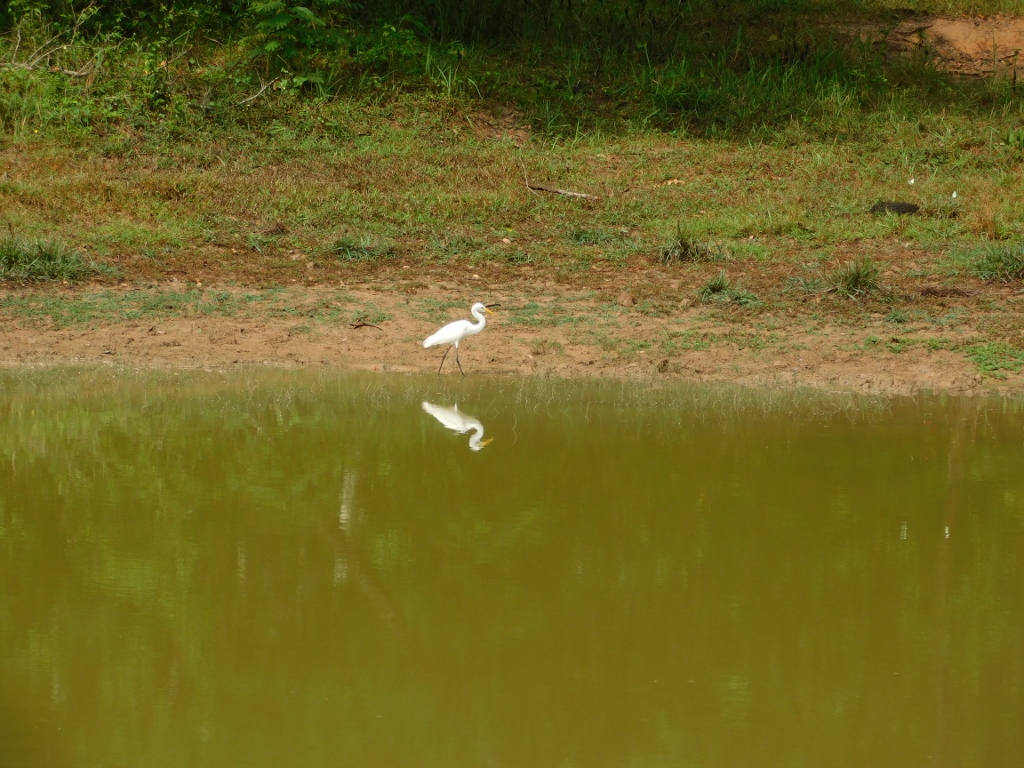 Heron in the Kui Buri NP
Heron in the Kui Buri NP
The point was that we simply continued our driving through the park.
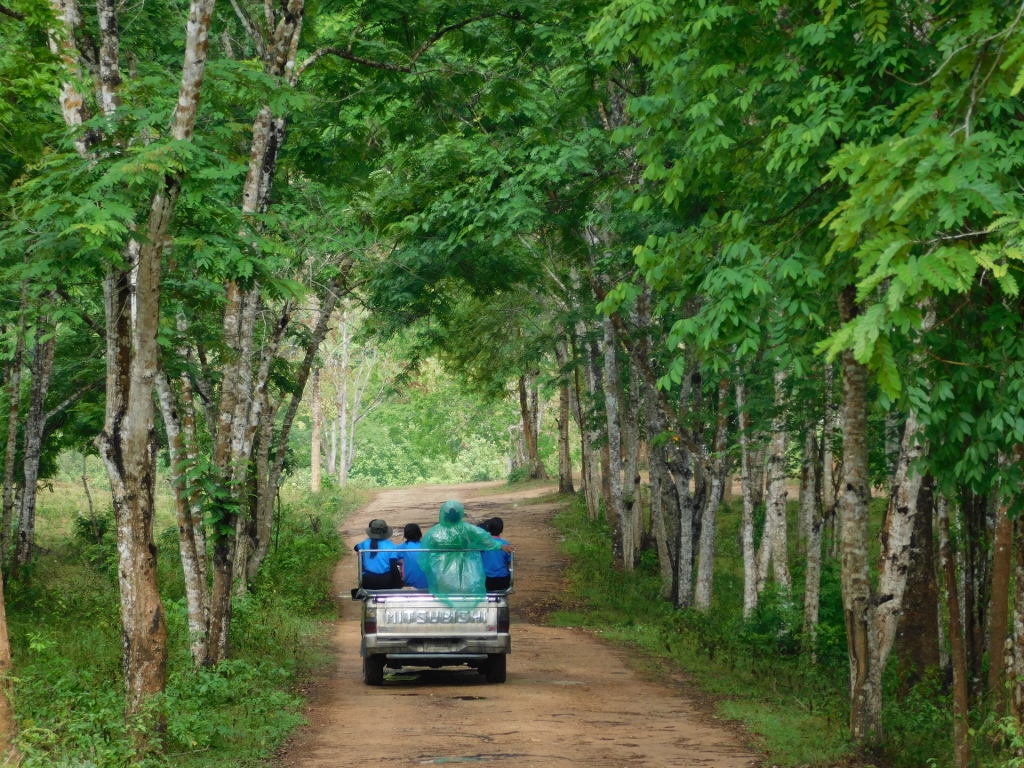 Kui Buri NP
Kui Buri NP
Here is also a video recording illustrating a little better what this driving through the park looked like:
And so, we reached a viewpoint situated on a small elevation. The only things visible from there were meadows, sporadic trees and hills covered in denser forest, which I captured in a photo.
 Kui Buri NP
Kui Buri NP
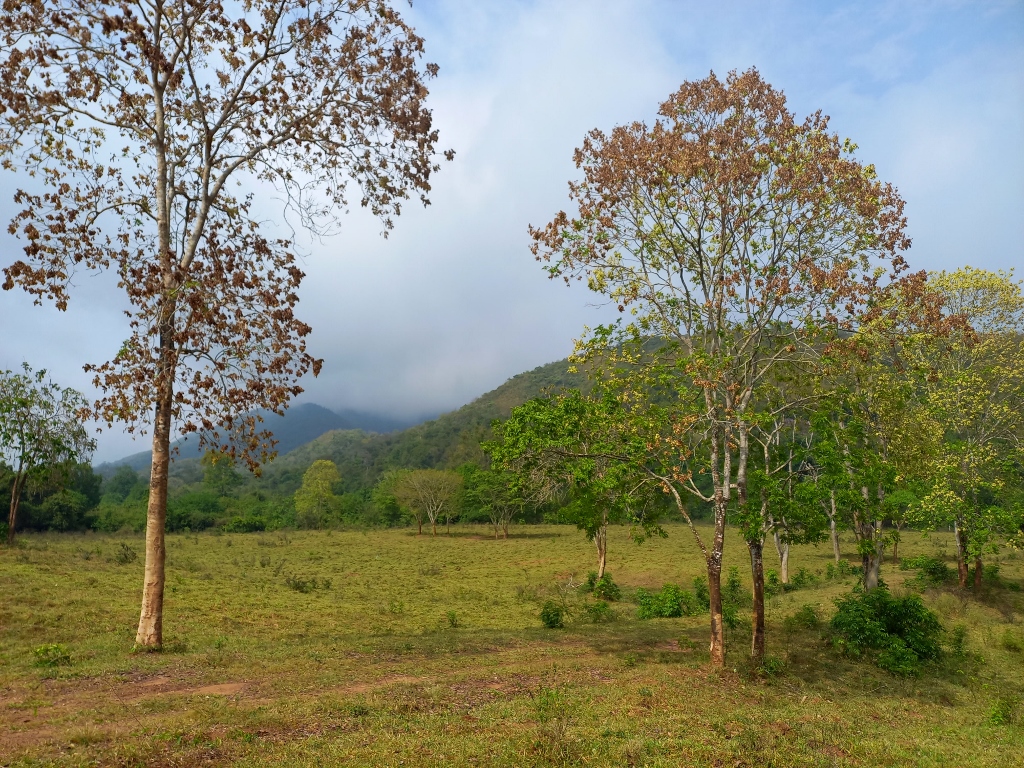 Kui Buri NP
Kui Buri NP
We stayed there for some time, but nothing was happening, so we got back into the truck and continued driving. The forests we passed through were genuinely beautiful, but a bit too static for my current expectations.
 Kui Buri NP
Kui Buri NP
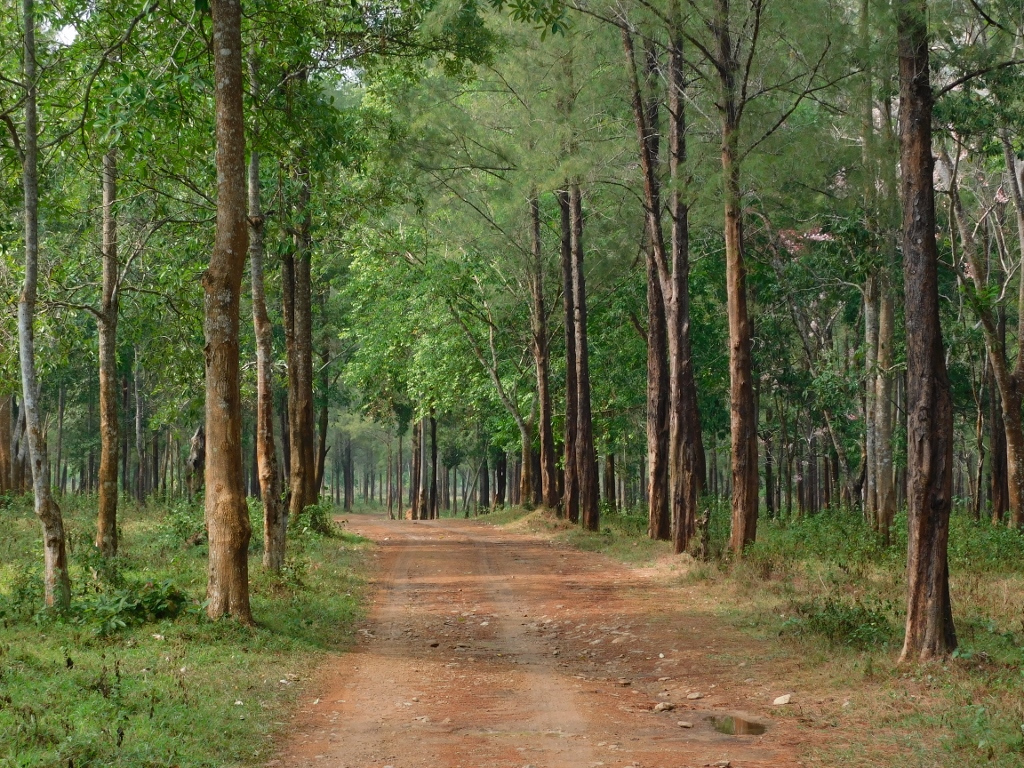 Kui Buri NP
Kui Buri NP
And so, we arrived at a more “serious” viewpoint designed for observing elephants from a distance, provided that they appeared in that area at all.
 Kui Buri NP
Kui Buri NP
When we arrived here, no animals were visible, especially not elephants. The guide led us a bit to the side, where we could practically continue observing the same meadow from the same elevation as seen in the previous photo.
 Kui Buri NP
Kui Buri NP
I finally saw something alive here that was moving and was big enough for me to notice. It was a couple of birds of the same species – red-wattled lapwings (Vanellus indicus atronuchalis).
 Red-wattled lapwing
Red-wattled lapwing
I entertained myself trying to capture these birds on camera, but essentially nothing else was happening, so we returned to the main part of the observation point. In the meantime, more visitors had gathered there.
 Kui Buri NP
Kui Buri NP
However, the situation remained unchanged and stayed that way until the end of our time at this viewpoint. No one that day saw any elephants.
 Kui Buri NP
Kui Buri NP
The fact that I didn’t see Asian elephants in the wild may not be crucial, but it left an impression on me that the guides, both here and in Khao Yai National Park, didn’t really make an effort to ensure visitors actually get to see these fascinating animals. Here, the vehicles arrived at a couple of viewpoints and parked, the visitors got out and started to wait. That was it. The guide’s explanation was that elephants are wild animals and therefore unpredictable.
To some extent, I can accept that, considering I myself expressed a preference for nature over a zoo. However, I couldn’t shake off the feeling that everything was too random, passive and even disinterested, primarily on the part of the guides and the national park itself.
I’ve already mentioned that in the Khao Yai National Park, this was organised in such a way that a convoy of vehicles with visitors drove relatively slowly along an asphalt road shared with other vehicles and trucks (not necessarily moving slowly), hoping to encounter a herd of elephants JUST at the moment when they were crossing that road. It’s such a comical game of probability that I wasn’t the least bit surprised that we didn’t see any elephants. Here, it felt like we were waiting to see if the elephants would decide to stroll exactly where there were plenty of visitors, some of whom were even too noisy for my taste, while not a single guide attempted to calm them down. That comparatively large noise was certainly not a good factor for the appearance of wild animals.
So, just like in the Khao Yai NP, here too, I was left with the impression of complete disinterest. Even the guide we officially received, and ultimately paid for, didn’t speak a word of English!!!
Since the elephants were not showing up at all, the guide took us to a nearby termite mound and poked it a bit with a twig to make the termites appear on the surface. Well, if there are no elephants, at least give us some termites then.
 Termite mound
Termite mound
 Termites
Termites
The situation below the observation point remained unchanged, i.e., only meadows and trees were visible.
 Kui Buri NP
Kui Buri NP
That’s why at some point, we got back into the truck and then they returned us to the first viewpoint.
 Kui Buri NP
Kui Buri NP
There, we finally spotted a couple of mammals. It was a solitary member of some deer species and a few gaurs (Bos gaurus).
 Deer
Deer
 Gaurs
Gaurs
Here, the excursion practically ended and they simply returned us to the visitor centre’s parking lot where my taxi awaited. We then started our journey back to Hua Hin.
Since I enjoyed the hot soup in the morning, I asked the taxi driver to stop somewhere along the way where I could eat. He chose one of the places next to the road with a gas station, a large parking lot and plenty of space where one could eat. However, he recommended a smaller stand set up somewhat in the middle of everything.
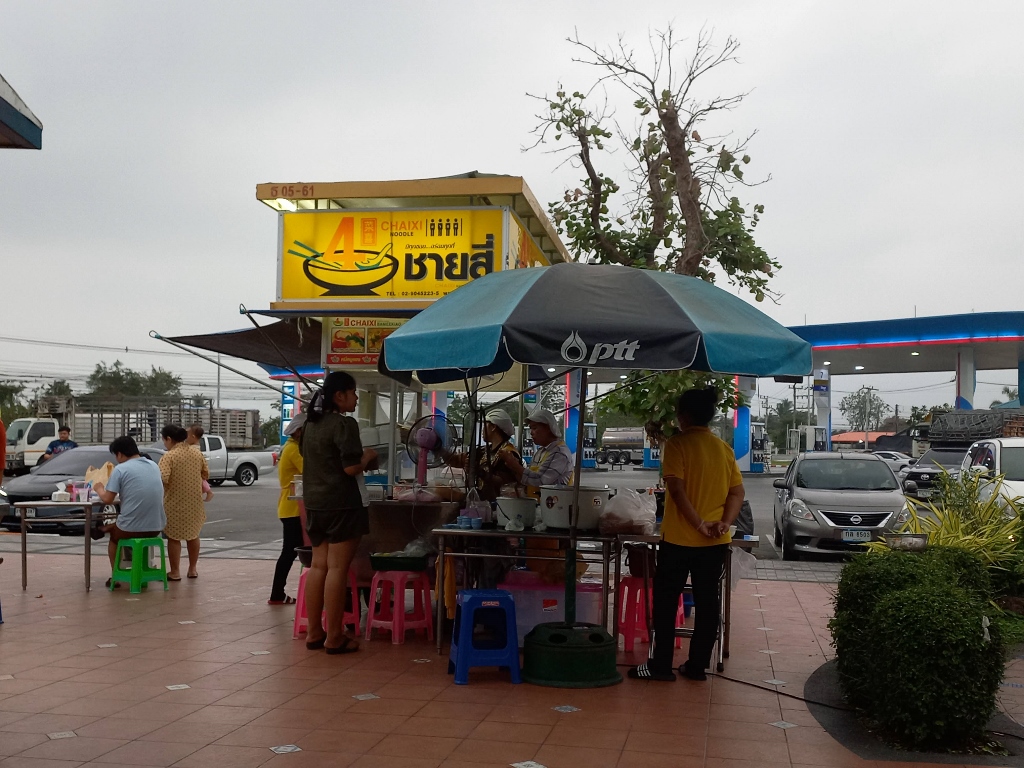 Place to buy one’s lunch
Place to buy one’s lunch
But the informality of the place, including the tables and chairs, should not discourage visitors at all – the food is always very delicious.
 Place to buy one’s lunch
Place to buy one’s lunch
I opted for hot soup again, and it was also excellent and enjoyable.
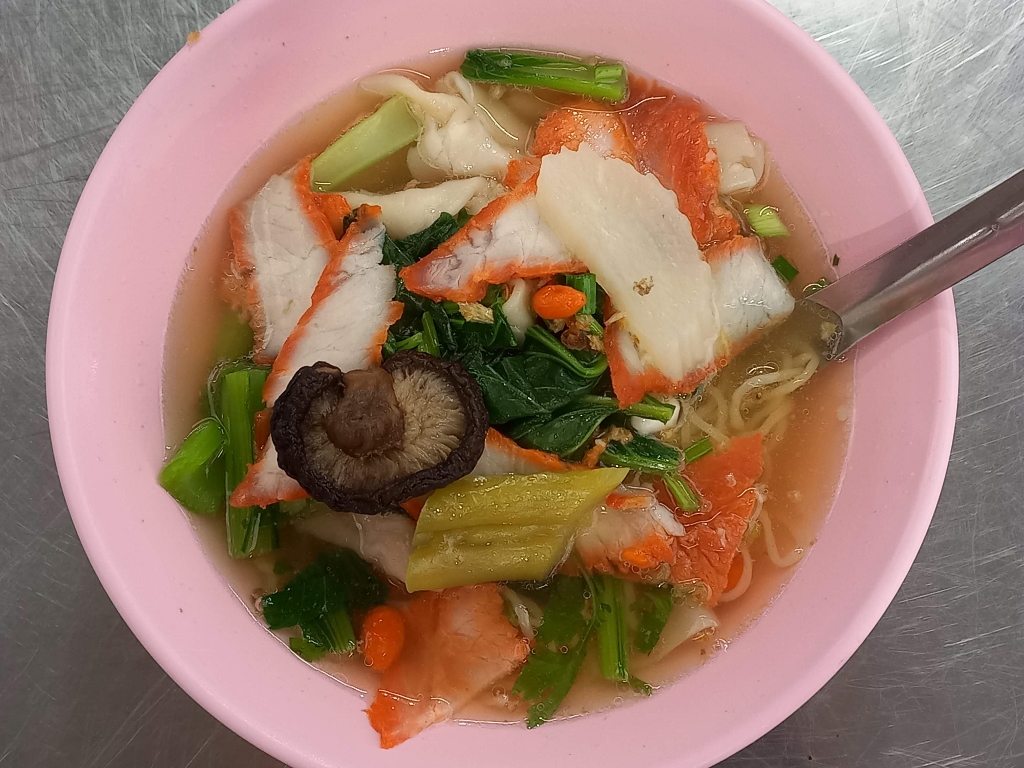 Lunch along the road
Lunch along the road
Although full up, but not entirely satisfied with the day, I returned to the hotel and practically didn’t go out again. Since I was heading back to Bangkok the next day, it was crucial for me to rest as much as possible and give my body a chance to recover and strengthen for the continuation of the journey.
In the morning, I took a tuk-tuk from the hotel to the train station. To start with, this tuk-tuk was different from the ones I had seen or ridden elsewhere. I found it very amusing how many different types of vehicles I had used during my travels in Thailand. Here, however, I took the opportunity to ask the driver to take a picture of me after I had already boarded.
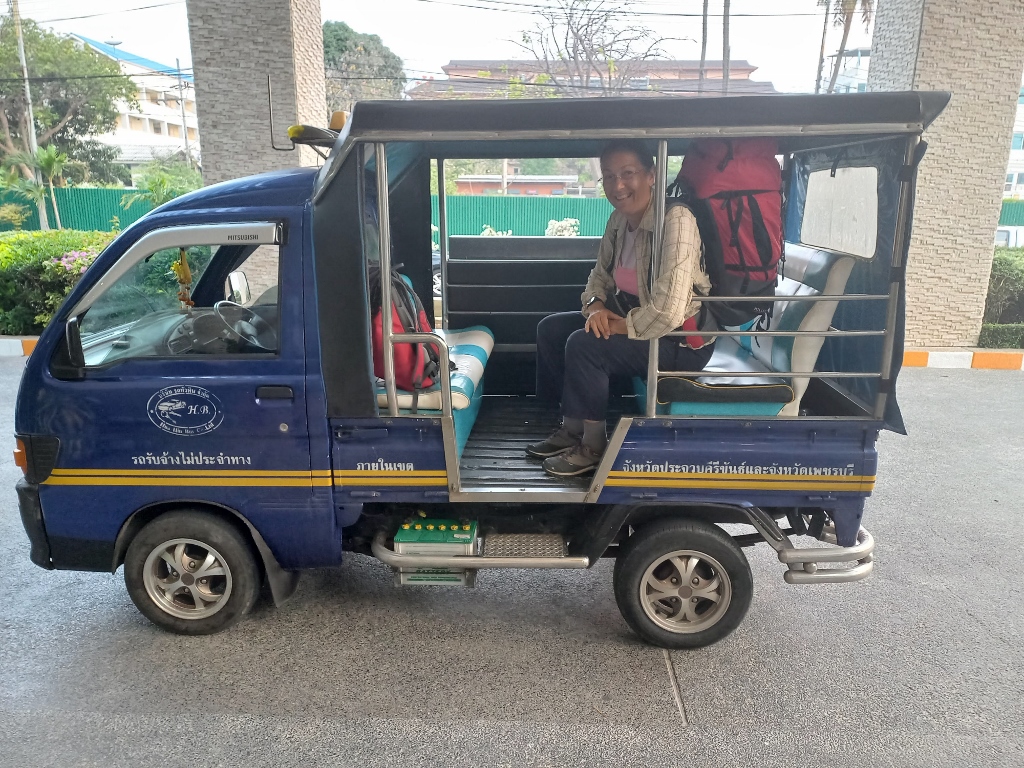 Ready for the continuation of the journey
Ready for the continuation of the journey
When I arrived at the train station, an unpleasant surprise awaited me. The train was almost an hour and a half late. Well, I didn’t have a choice, so I simply sat down and started waiting. In the meantime, I took the opportunity to go to some stalls near the station to buy something to eat.
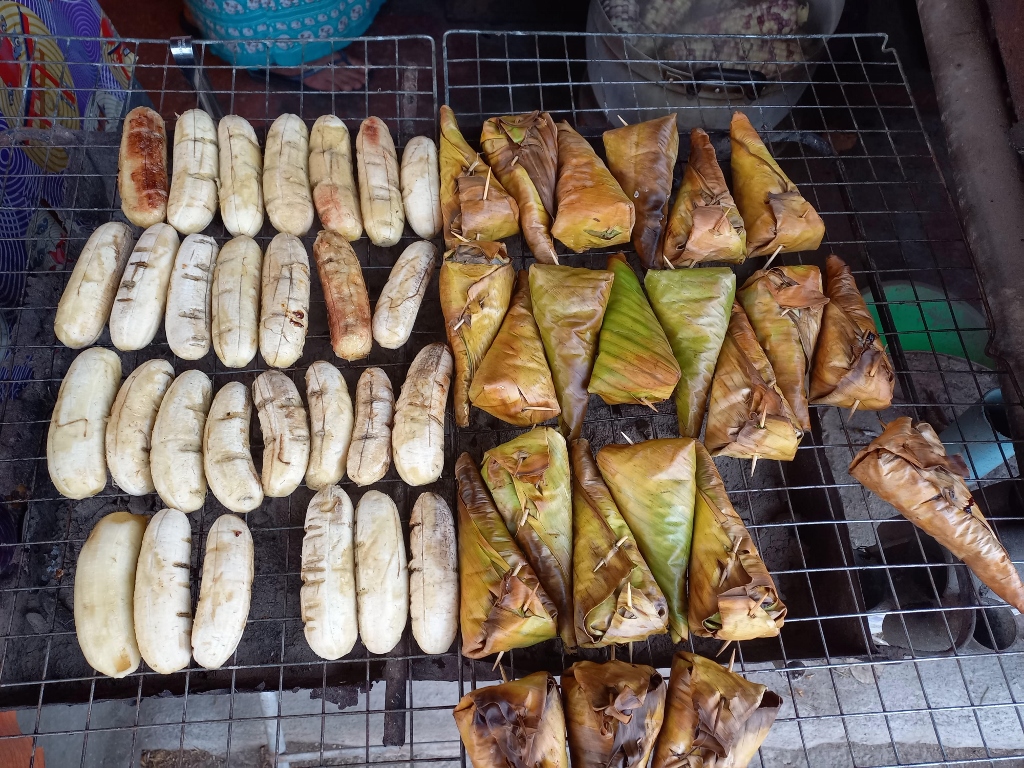 Food in Thailand is exceptionally varied
Food in Thailand is exceptionally varied
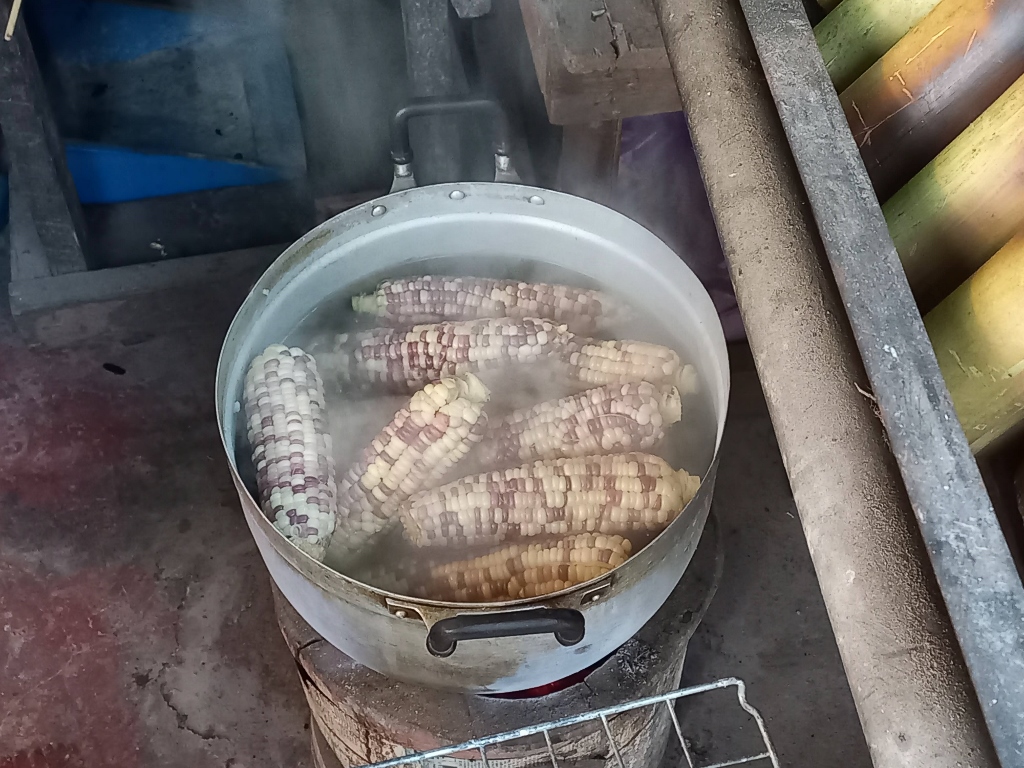 Food in Thailand is exceptionally varied
Food in Thailand is exceptionally varied
Then, I sat on one of the benches at the station and began to wait. I passed the time by observing and taking photos of the surroundings.
 Waiting for the train...
Waiting for the train...
There were various interesting details around. For instance, a warning formulated in a way usually used to caution about the presence of dogs – “Beware of trains.”
 Warning that a train may suddenly jump at you
Warning that a train may suddenly jump at you
But there were also lovely locals who were especially charming in certain postures.
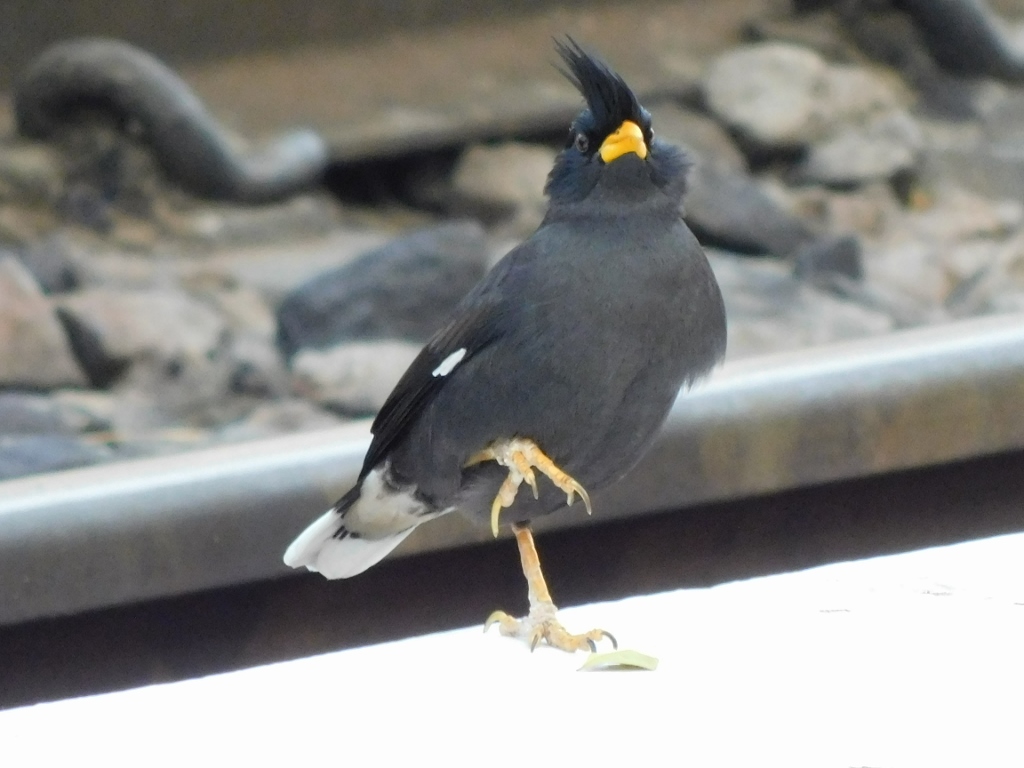 Great myna or white-vented myna (Acridotheres grandis)
Great myna or white-vented myna (Acridotheres grandis)
I occasionally walked around, capturing various details near the train station building.
 A detail of the train station in Hua Hin
A detail of the train station in Hua Hin
From time to time I also checked the station screen displaying the expected arrival time of the train. While waiting, it turned out that the train started to speed up, so it eventually arrived “only” about 50 minutes late. I must say I was thoroughly impressed because we reached Bangkok almost to the minute as originally announced. In other words, the train made up for all the delay it had earlier that morning. Absolutely impressive!!!
I deliberately bought a 3rd-class ticket because I find it more interesting and picturesque, and the train travels at the same speed for passengers in the 3rd class as it does for those in the 1st class wagons. At first, I just observed the passengers around me, but later on, I started to drink and eat more, especially the food regularly sold on the train.
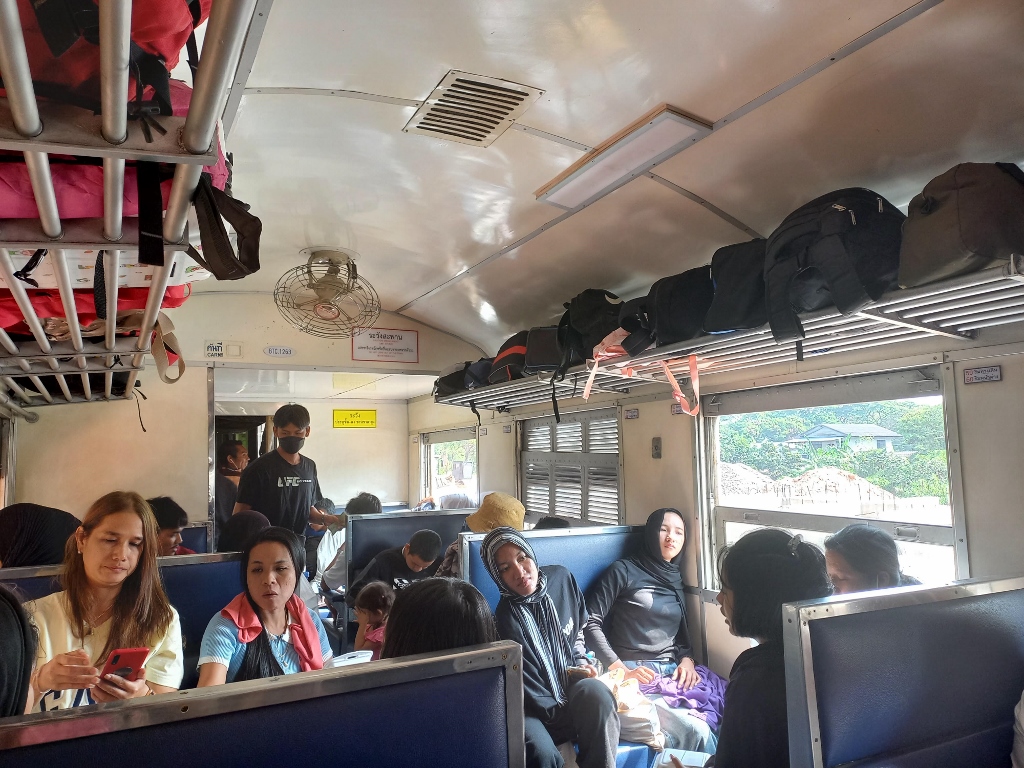 The 3rd class train on its way to Bangkok
The 3rd class train on its way to Bangkok
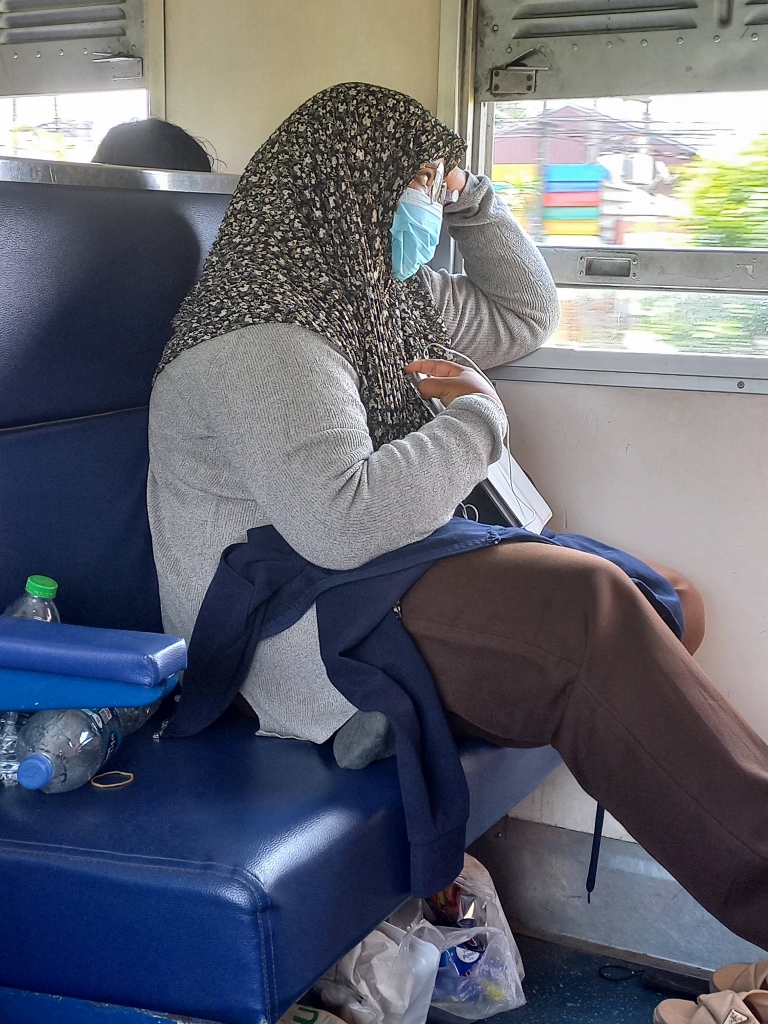 The 3rd class train on its way to Bangkok
The 3rd class train on its way to Bangkok
As it can be seen, the train was quite neat and clean. Despite this being the 3rd class, I received a reservation with my ticket and my seat was waiting for me. Though it felt a bit cramped for me, it has nothing to do with the trains in Thailand but rather with my height. The next photo shows how much space my legs needed compared to the legs of the girl sitting next to me. Or, as I occasionally like to joke: “I have a problem – I have loooong legs.”
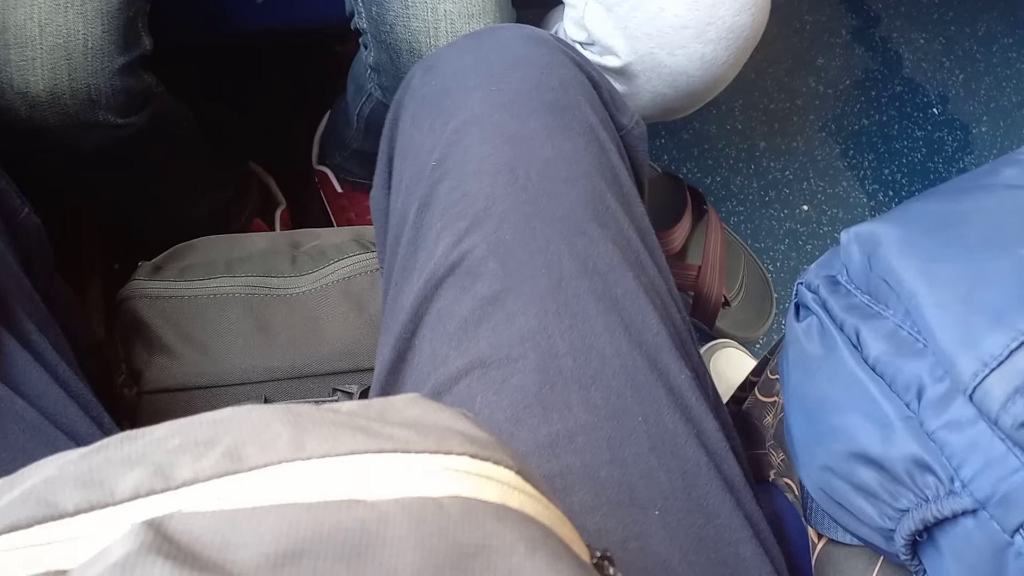 I need more space that a Thai woman of an average height
I need more space that a Thai woman of an average height
As for the food, vendors regularly walked through the train, offering their goods.
 Food on the train heading for Bangkok
Food on the train heading for Bangkok
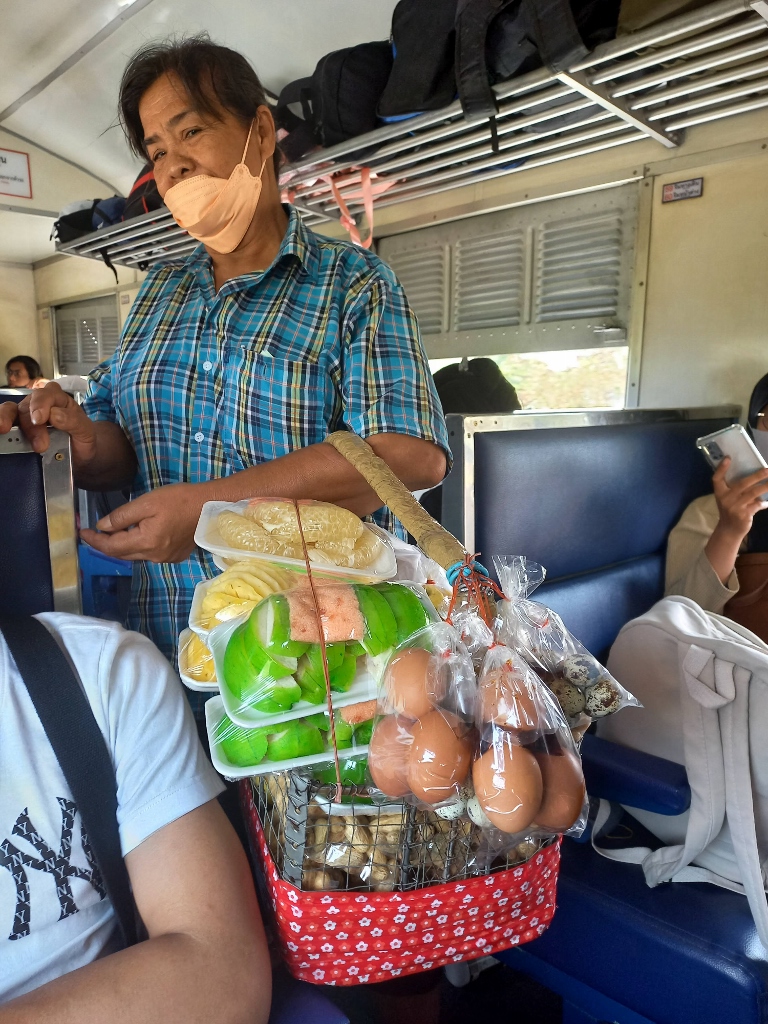 Food on the train heading for Bangkok
Food on the train heading for Bangkok
I first bought some tea to give my body a little boost and then I moved on to solid food.
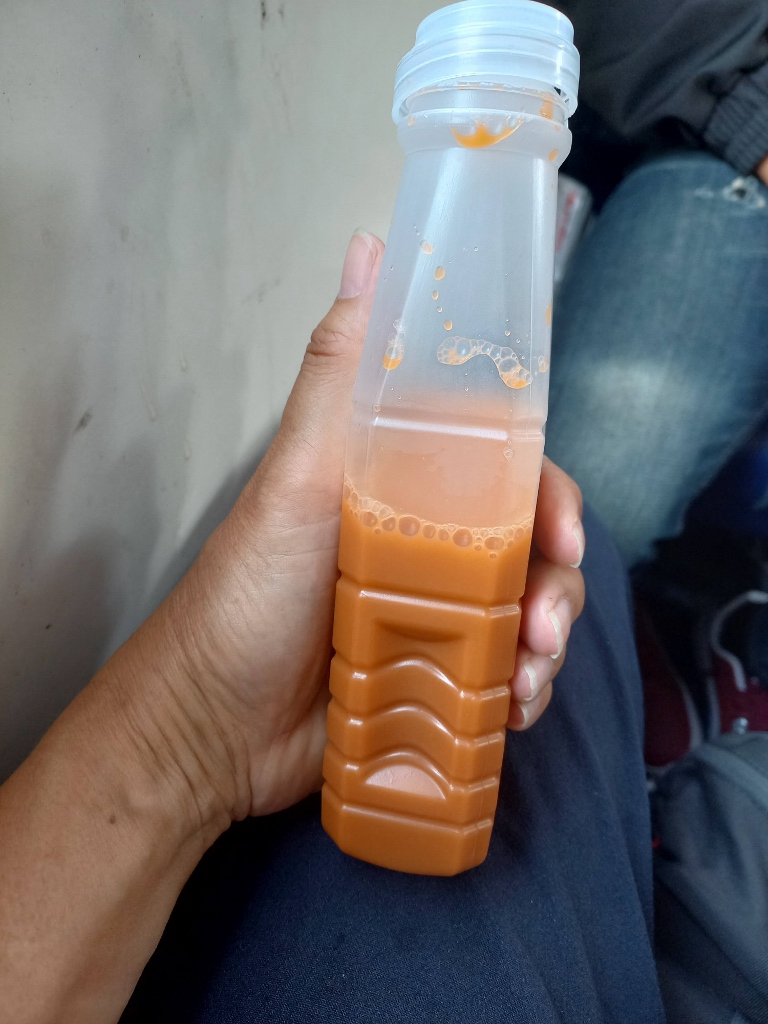 Tea on the train heading for Bangkok
Tea on the train heading for Bangkok
 Mysterious lunch on the train heading for Bangkok
Mysterious lunch on the train heading for Bangkok
 Lunch on the train heading for Bangkok
Lunch on the train heading for Bangkok
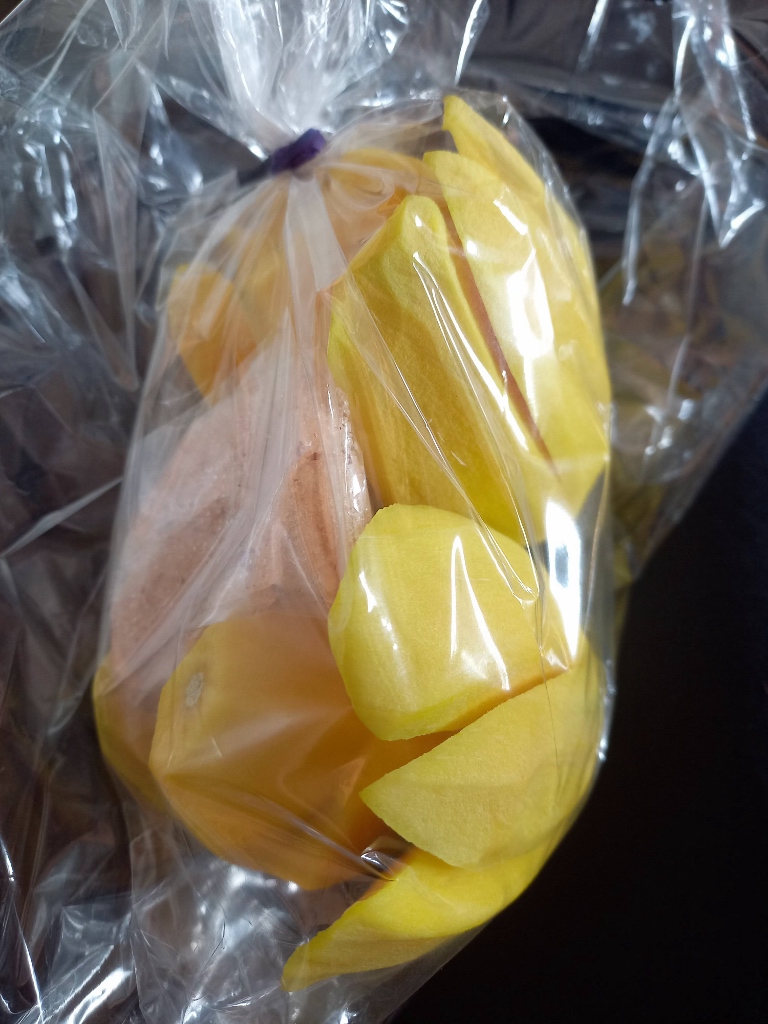 Mango on the train heading for Bangkok
Mango on the train heading for Bangkok
By the way, these vendors constantly change trains. They enter at one station, go through the train, sell their products and then disembark at the next station, where they wait for the next train.
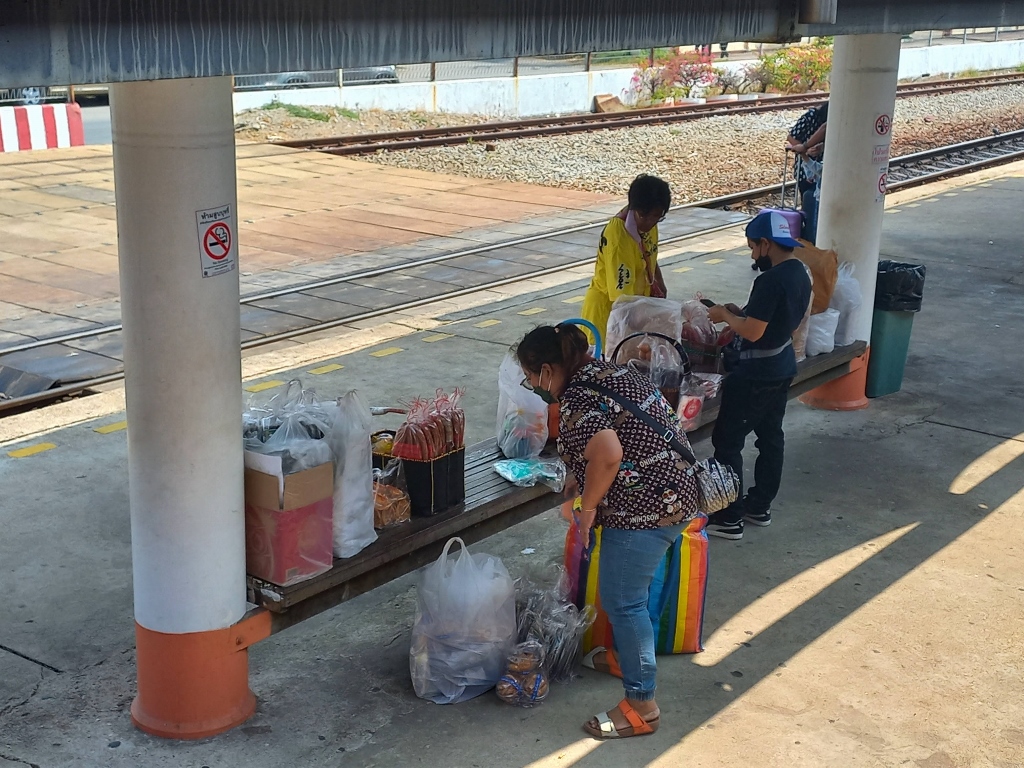 Food and beverage vendors at a station between two trains
Food and beverage vendors at a station between two trains
And so, I killed the time eating and observing what was happening around me. But, as I’ve mentioned, we arrived in Bangkok on time. Then I caught a taxi at the train station and drove to the hotel where I had booked a room for the remaining two nights of my stay in Thailand.
For my second stay in Bangkok, I chose a hotel in Chinatown. It turned out to be in the perfect location for me, making it easy to explore this part of the city. Additionally, from the top of the hotel, I had a wonderful view of Bangkok and some of its areas. I was glad to be back.
 View at Bangkok from the top of the hotel
View at Bangkok from the top of the hotel
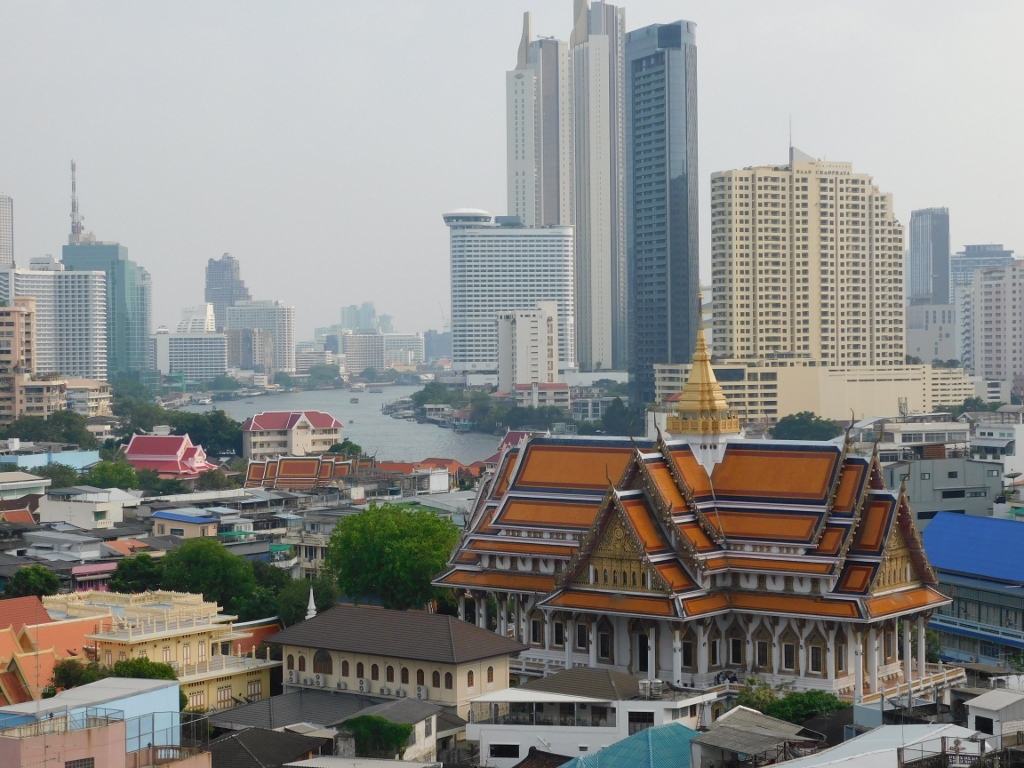 View at Bangkok from the top of the hotel
View at Bangkok from the top of the hotel
 View at Bangkok from the top of the hotel
View at Bangkok from the top of the hotel